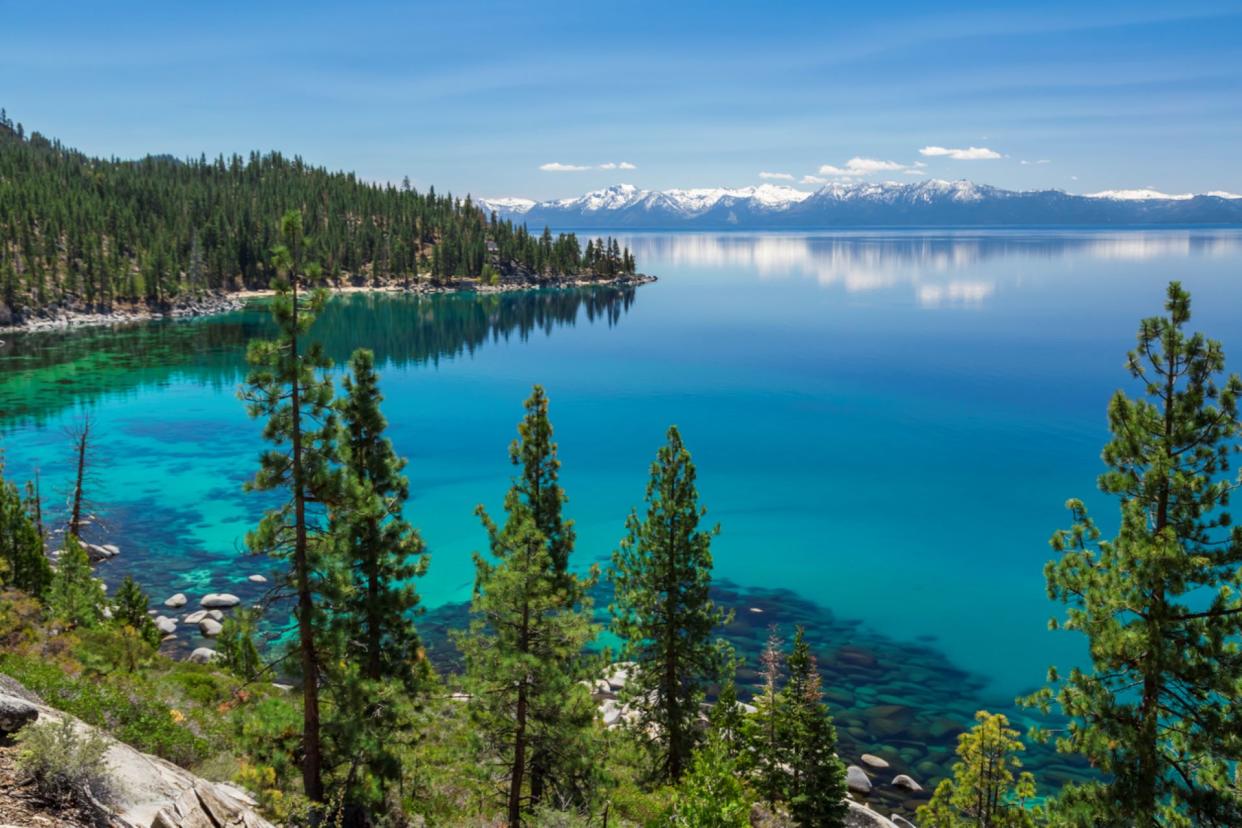Water levels of iconic American lake rise near capacity for first time in years: 'Water year 2024 is well on its way to receiving an A'

Lake Tahoe is expected to reach normal levels for the first time since 2019, SFGATE reported. The prediction comes via a recent report from the U.S. Department of Agriculture, which credited the change to unusually high levels of precipitation over the past two winters.
"In summary, water year 2024 is well on its way to receiving an A on its final report card," the report said. "The difference between an A- and an A+ might come down to how much spring precipitation the region receives and how those amounts impact observed streamflow volumes."
Lake Tahoe, located in California and Nevada, is known for its sparkling blue waters and as a destination for tourists and watersports enthusiasts.
Despite being designated an "Outstanding National Resource Water" under the Clean Water Act, the lake has faced several environmental challenges recently. Low water levels, plastic pollution, and clouding caused by surrounding development have been just a few of the problems.
The fact that the levels are now returning to capacity is a good sign for the treasured natural resource, which supports nearly 300 species of birds, mammals, and fish, and over a thousand types of plants, according to the California Tahoe Conservancy.
However, the wildly fluctuating water levels are still concerning, overall. The overheating of our planet — largely caused by our society's reliance on dirty energy sources like gas and oil — has led to changing weather patterns, which has led to something called the "dry gets drier, wet gets wetter" paradigm.
Watch now: Alaska Airlines employee's suggestion diverts 15,000 lbs of plastic trash
This refers to the phenomenon in which weather essentially becomes more extreme across the spectrum. In the American west, it has resulted in megadrought, and also in intense wet seasons that cause flooding.
While the combined results have led to some lakes essentially evening out, with levels getting dangerously low and then filling back up quickly, this is not a sustainable long-term solution.
In order to protect our natural resources and the many species that rely on them, it is crucial that our society moves beyond gas and oil and embraces clean, renewable sources of energy like solar and wind.
Join our free newsletter for cool news and cool tips that make it easy to help yourself while helping the planet.

